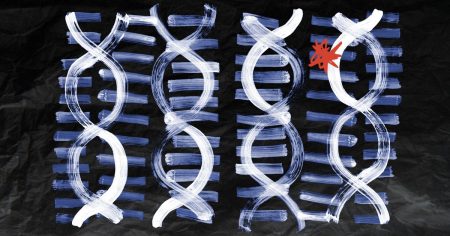A new study in mice has found that increased physical activity is linked to reduced DNA damage, including telomeres, which are associated with biological aging and age-related damage to blood vessels. The researchers at the University of Utah focused on the role of DNA damage in blood vessels and the aging cardiovascular system. They found that increased exercise is associated with reduced DNA damage in the cells that line blood vessels, which may help explain how exercise can reduce the risk of developing atherosclerosis, even later in life. The study, led by Jisok Lim, PhD, was presented at the American Physiology Summit and highlights the potential benefits of exercise in protecting against DNA damage and improving cardiovascular health.
Heart disease and other cardiovascular problems increase with age, often due to atherosclerosis, which is the build-up of fatty substances on blood vessel linings. Exercise has been shown to significantly reduce the risk of atherosclerosis and improve cardiovascular outcomes, even in older adults. The new study emphasizes the role of DNA damage in aging, as damaged DNA can contribute to the declining health of blood vessels over time. Telomeres, a DNA structure associated with biological age, are particularly sensitive to damage and play a role in age-related diseases such as cardiovascular disease.
Telomeres protect chromosomes from damage, and their length can reflect biological age, with shorter telomeres associated with age-related diseases. Cells that line blood vessels are subject to shear stress caused by disrupted blood flow, increasing the risk of atherosclerosis. Exercise may help reduce cardiovascular risk by minimizing DNA damage and protecting telomere function. The University of Utah study observed that increased physical activity was linked to less DNA damage and better telomere function in endothelial cells, which line blood vessels, but not in vascular smooth muscle cells. The study provides evidence that exercise can defend against DNA damage and protect telomere function, ultimately benefiting cardiovascular health.
Several studies have explored the relationship between exercise and telomeres, with some finding that physical fitness is associated with longer telomeres. While the University of Utah study adds valuable information to this body of research, it has certain limitations. Conducted on a small sample of mice, extrapolating these findings to humans should be done cautiously. Furthermore, the study only included male mice, so the results may not be generalizable to female animals or humans. Despite these limitations, the study contributes valuable insights into the potential benefits of exercise in protecting against DNA damage and improving cardiovascular health.
Overall, the University of Utah study sheds light on the benefits of exercise in reducing DNA damage and protecting telomere function in blood vessels. By revealing how increased physical activity can improve cardiovascular health through these mechanisms, the study provides important insights into the potential of exercise as a protective factor against age-related damage and diseases such as atherosclerosis. While the study has limitations that need to be addressed, such as the small sample size and focus on male mice, it adds valuable information to the growing body of research on the role of exercise in promoting cardiovascular health and reducing the risk of age-related diseases.













